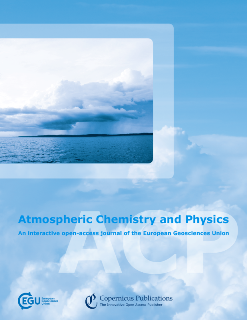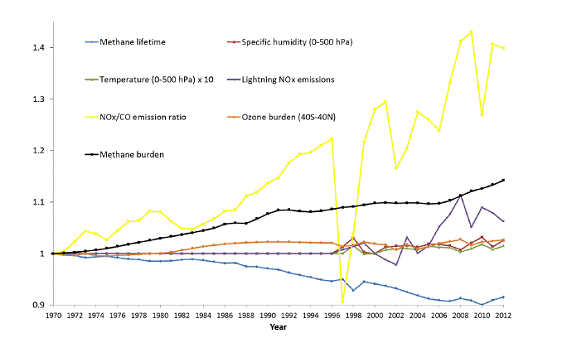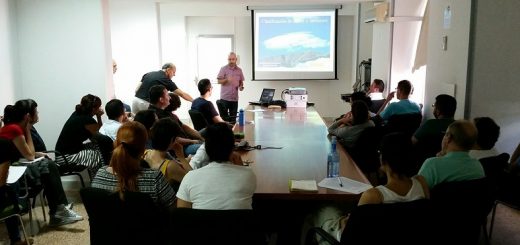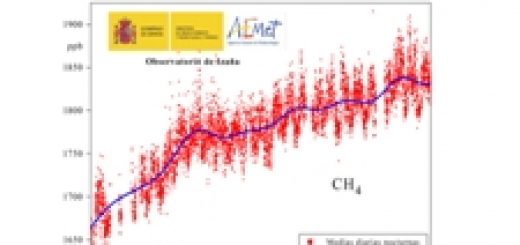Modelling the atmospheric methane evolution during the last 40 years (New study published in Atmospheric Chemistry and Physics Discussions)

This study led by Norwegian researchers (CICERO y NILU) in which have also participated a researcher from the Izaña Atmospheric Research Center (AEMET) and two researchers from the University of California, models the atmospheric CH4 (methane) evolution during the last 40 years, and was published on 5 November 2015 in Atmospheric Chemistry and Physics Discussions.
Observations at surface stations show an increase in global mean surface CH4 of about 180 parts per billion (ppb) (above 10 %) over the period 1984–2012. Over this period there are large fluctuations in the annual growth rate. In this work, the atmospheric CH4 evolution over the period 1970–2012 is investigated with the Oslo CTM3 global Chemical Transport Model (CTM) in a “bottom-up” approach (that is, using the emission inventories, with their large uncertainties, and state of art surface models to account for the interchange of CH4 between the atmosphere and the biosphere/oceans with the purpose of simulating the evolution of the atmospheric CH4).
Surface measurements carried out at sites of international networks are used for comparisons with the output from the CTM to understand causes both for long-term trends and short-term variations.
The Oslo CTM3 model was able to reproduce the seasonal and year to year variations and shifts between years with consecutive growth and stagnation, both at global and regional scales. The overall CH4 trend over the period is reproduced, but for some periods the model fails to reproduce the strength of the growth. The observed growth after 2006 is overestimated by the model in all regions. This seems to be explained by a too strong increase in anthropogenic emissions (of the inventories) in Asia in that period, having global impact. These findings confirm other studies questioning the timing or strength of the emission changes in Asia in the EDGAR v4.2 emission inventory over the last decades.
The evolution of CH4 is not only controlled by changes in sources, but also by changes in the chemical loss in the atmosphere and soil uptake. In this numerical simulation a large growth in atmospheric oxidation capacity over the period 1970–2012 is found: the CH4 lifetime decreases by more than 8% from 1970 to 2012, a significant shortening of the residence time of this important greenhouse gas. This results in substantial growth in the chemical CH4 loss (relative to its burden) and dampens the CH4 growth. The change in atmospheric oxidation capacity is driven by complex interactions between a number of chemical components and meteorological factors. The key factors are identified and simple prognostic equations for the relations between these and the atmospheric CH4 lifetime are provided.

Figure 1. Development in atmospheric CH4 lifetime and key parameters known to influence CH4 lifetime. All variables values are relative to 1970. The variations in temperature are scaled up by a factor of 10.
More information about this study can be found in:
Dalsøren, S. B., Myhre, C. L., Myhre, G., Gomez-Pelaez, A. J., Søvde, O. A., Isaksen, I. S. A., Weiss, R. F., and Harth, C. M.: Atmospheric methane evolution the last 40 years, Atmos. Chem. Phys. Discuss., 15, 30895-30957, doi:10.5194/acpd-15-30895-2015, 2015,
which can be accessed/downloaded from: http://www.atmos-chem-phys-discuss.net/15/30895/2015/acpd-15-30895-2015.html







